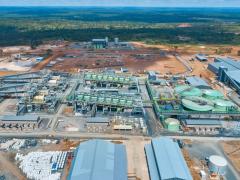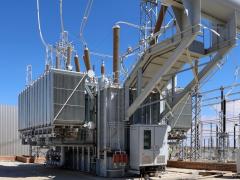The Port of Richards Bay has broken a new operational record, handling 30 million tonnes of freight in the 2024/25 financial year, surpassing its previous peak and the 27 million tonne target set by Transnet Port Terminals (TPT). Now the port is preparing for a strategic shift towards supporting South Africa’s emerging lithium industry and other energy-related exports.
Thula Dlamini, Managing Executive for Richards Bay Terminals, says this milestone reflects growing efficiency and an active effort to reposition the port as a critical hub for new-age commodities. “We’ve worked harder and smarter to move beyond legacy constraints. This validates our commitment to improving performance and supporting South Africa’s mineral and energy sectors.”
From coal to clean commodities
While Richards Bay remains a key channel for bulk mineral exports like coal, chrome and magnetite, TPT has begun prioritising cleaner energy commodities. Lithium tops the list. Dlamini says three operational lithium mines in South Africa could be served by the port.
“We see growing demand for lithium globally. Richards Bay is well positioned to support this supply chain,” he says. “We’re also exploring other high-demand commodities aligned with the energy transition.”
To unlock space for new cargo, TPT is moving to relocate coal operations to a back-of-port area. The shift will allow coal to be transported via conveyor belts, reducing road congestion inside the terminal and freeing up berthing and storage space for cleaner commodities. The project is currently in the request-for-information stage with construction expected to follow within eight months.
Infrastructure investment underway
Operational upgrades are also being implemented to improve freight mobility in and around the port. A R100 million investment in road upgrades is underway, aimed at alleviating pressure on internal road networks and streamlining vehicle movement.
In addition, the terminal is prioritising improvements to its stormwater management system. “We’re benchmarking against other ports to ensure we adopt best practices and eliminate any risk of discharging contaminated water into the ocean,” says Dlamini.
Capacity improvements driving performance
Originally designed to handle 23 million tonnes per year, the terminal previously pushed capacity limits, reaching a peak of 28 million tonnes. However, capacity constraints and congestion often limited throughput.
“This year, we’ve proven that, with better systems and planning, we can exceed previous thresholds,” Dlamini says. “We’re now targeting consistent performance above the 30 million tonne mark.”
Increased efficiency has also allowed the port to attract greater volumes of chrome and magnetite, which remain in high global demand. “In the past, we were simply not an effective outlet. That has changed. The more efficient we become, the more volume we can handle,” says Dlamini.













